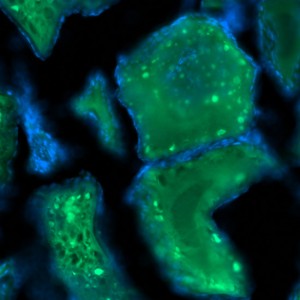Fish Reproductive Physiology Lab
Research in the Van Der Kraak Lab
Multifactorial Regulation of Ovarian Function in Teleosts
Fish are used as the experimental model for studies investigating how the actions of hormones, growth factors of ovarian origin and intracellular signal transduction pathways interact to coordinate ovarian growth and differentiation. While our studies in the past used goldfish and rainbow trout our most recent work focuses on the zebrafish so that we can exploit the daily spawning in order to characterize the temporal sequence of endocrine changes that accompany oocyte final maturation and ovulation. We study the control of growth, atresia and hormone biosynthetic capacity of zebrafish ovarian follicles during the period of oocyte maturation and at ovulation. In addition, we are addressing the relevance of growth factors to ovarian physiology (IGFs, steroids, retinoids) by studying their actions and assessing of their sites of synthesis within the ovary and regulation of their production.
Recent Publications
Evaluation of Reproductive Fitness in Fish
Awareness that chemicals in the environment affect reproductive performance of feral fish populations through effects on endocrine homeostasis has led to the implementation of industrial process changes and waste treatment strategies designed to eliminate or reduce the release of harmful chemicals to the environment. As a result, there is a need to develop rapid methods of determining the effectiveness of technological changes as they pertain to reproductive endocrine endpoints. On going research focuses on the development of short term in vitro techniques through to whole animal test methods applicable in lab and field settings to evaluate both general reproductive physiology through to the effects seen following exposure to chemicals on reproductive physiology of fish. The long term goal of this work is to establish whether chemicals which are identified on the basis of in vitro bioactivity are predictive of effects in vivo and to determine which endocrine responses are most sensitive in terms of whole animal and population levels effects. Our traditional focus has been on the effects of pulp and paper and sewage effluent discharges but one of the new areas where we are working relate to the impacts associated with exposure to wastes generated during the processing of the Alberta oil sands. We also have with collaborators at the University of British Columbia and the Department of Fisheries and Oceans been studying the underlying mechanisms responsible for early migration and high levels of pre-spawning mortality in several stocks of Fraser River sockeye salmon (Oncorhynchus nerka). [Recent Publications]
Ecotoxicological Effects of Atrazine on Amphibians
Atrazine is a widely used herbicide that is applied to corn sorghum and sugar cane crops. There is concern that amphibians may be exposed to atrazine as a result of run-off to waterbodies in the vicinity of agriculutural land following application the herbicide. There is concern that atrazine may function as an endocrine disruptor and adversely effect reproductive development in amphibians. With a consortium of researchers in the Canada, the United States and South Africa, we are investigating the effects of atrazine on various aspects of reproductive development in both lab and field settings. [Recent Publications]
